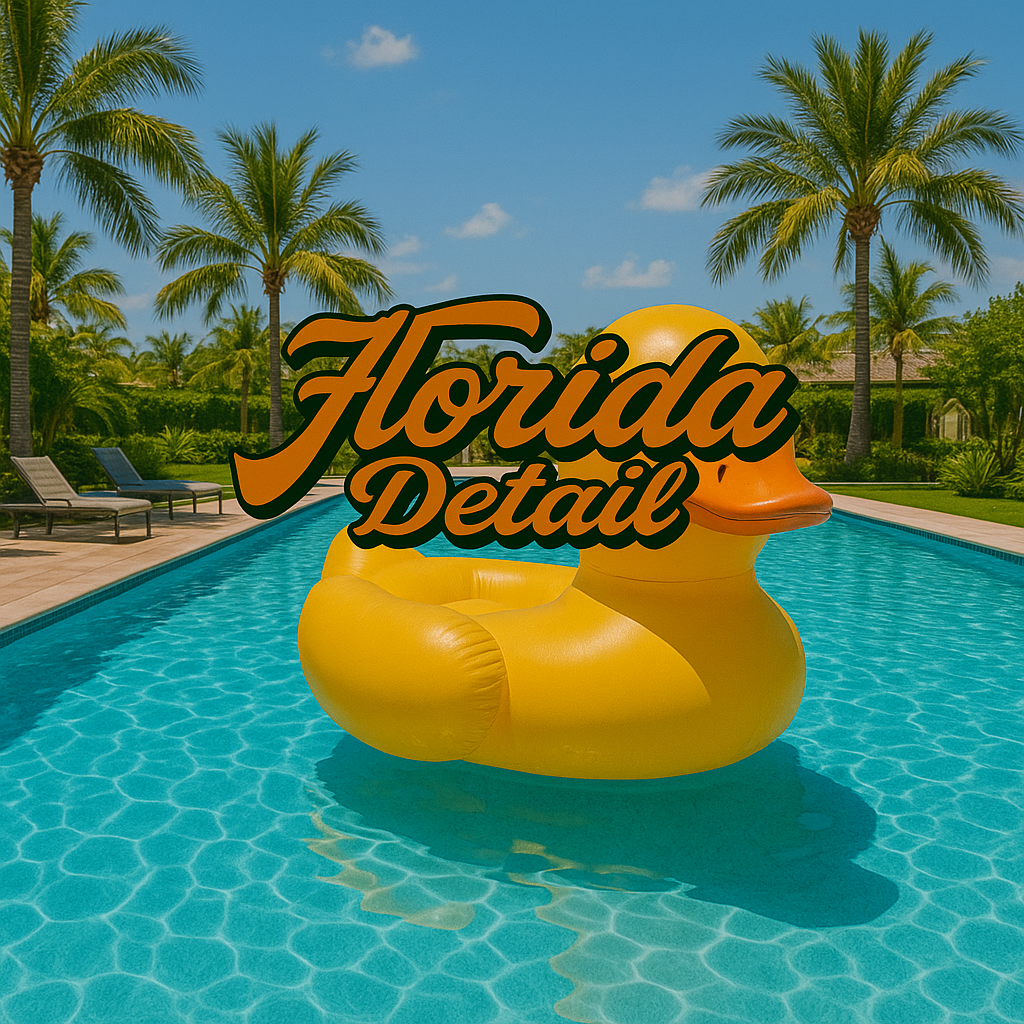🧪 Step-by-Step Guide to Balancing Pool Chemicals Safely
Introduction
A sparkling, safe pool doesn’t happen by accident—it requires proper water chemistry. Balancing pool chemicals is one of the most important tasks for homeowners in Port Charlotte, Punta Gorda, North Port, Rotonda, and across Charlotte County.
When pool chemicals are out of balance, water can become unsafe, irritating to swimmers, and damaging to your pool equipment. The good news? With the right steps, balancing your pool can be easy, safe, and stress-free. At Florida Detail, we help local homeowners keep their pools swim-ready year-round. Here’s your step-by-step guide.
✅ Step 1: Test Your Water First
- Use a reliable pool testing kit or digital meter.
- Test for pH, chlorine, total alkalinity, calcium hardness, and stabilizer (CYA).
- Write down the results to compare week to week.
👉 Pro Tip: In Charlotte County, test water at least 2–3 times a week due to heavy rains and intense sun.
✅ Step 2: Adjust pH Levels
- Ideal pH range: 7.2–7.6.
- If pH is too low, add a pH increaser (soda ash).
- If pH is too high, add a pH reducer (muriatic acid or sodium bisulfate).
✅ Step 3: Balance Total Alkalinity
- Target range: 80–120 ppm.
- Use baking soda to raise alkalinity.
- Use muriatic acid to lower alkalinity if it’s too high.
👉 Alkalinity acts as a buffer, keeping your pH stable.
✅ Step 4: Check and Adjust Chlorine
- Chlorine sanitizes your pool by killing bacteria and algae.
- Ideal range: 1–3 ppm.
- Use liquid chlorine, chlorine tablets, or a salt system to adjust levels.
✅ Step 5: Maintain Calcium Hardness
- Target range: 200–400 ppm.
- Low calcium causes plaster damage; high calcium leads to scaling.
- Add calcium chloride to raise levels if needed.

✅ Step 6: Stabilizer (Cyanuric Acid) Levels
- Protects chlorine from being burned off by Florida’s hot sun.
- Ideal range: 30–50 ppm for pools with chlorine systems.
- Too much stabilizer reduces chlorine effectiveness.
✅ Step 7: Shock Your Pool When Needed
- Shock once every 1–2 weeks, or after heavy rainstorms, algae blooms, or pool parties.
- Use calcium hypochlorite or liquid chlorine.
- Always shock at night for best results.
✅ Step 8: Retest and Record Results
- After adjustments, retest in 24 hours.
- Keep a maintenance log for consistent pool care.
- This helps spot patterns caused by weather or frequent use.
🌴 Local Example
After a week of heavy rain in North Port, one homeowner noticed cloudy water and algae growth. By following this chemical balancing routine, they restored clarity in two days and protected their equipment from damage.
⚠️ Safety Tips for Handling Pool Chemicals
- Always wear gloves and goggles when handling chemicals.
- Never mix different chemicals together.
- Store chemicals in a cool, dry place away from direct sun.
- Add chemicals to water, never water to chemicals.
❓ FAQs About Pool Chemical Balancing
Q1: How often should I balance pool chemicals in Florida?
At least once a week, and more often after storms or heavy use.
Q2: Can I swim immediately after adding chemicals?
Wait at least 4–6 hours, or overnight after shocking the pool.
Q3: What’s the most common mistake homeowners make?
Pouring chemicals directly into the pool without testing first.
Q4: Can I use household products like baking soda?
Yes! Baking soda raises alkalinity, but always test carefully before adding.
Conclusion
Balancing pool chemicals may seem intimidating, but with a step-by-step process, you can keep your water safe, clear, and inviting all year long. For busy homeowners in Charlotte County, professional service ensures your pool is always ready without the guesswork.
For expert weekly service, trust Florida Detail. Learn more about professional pool care strategies at UnlimitedManiac.com or local resources like NorthPortPoolCompany.com.
